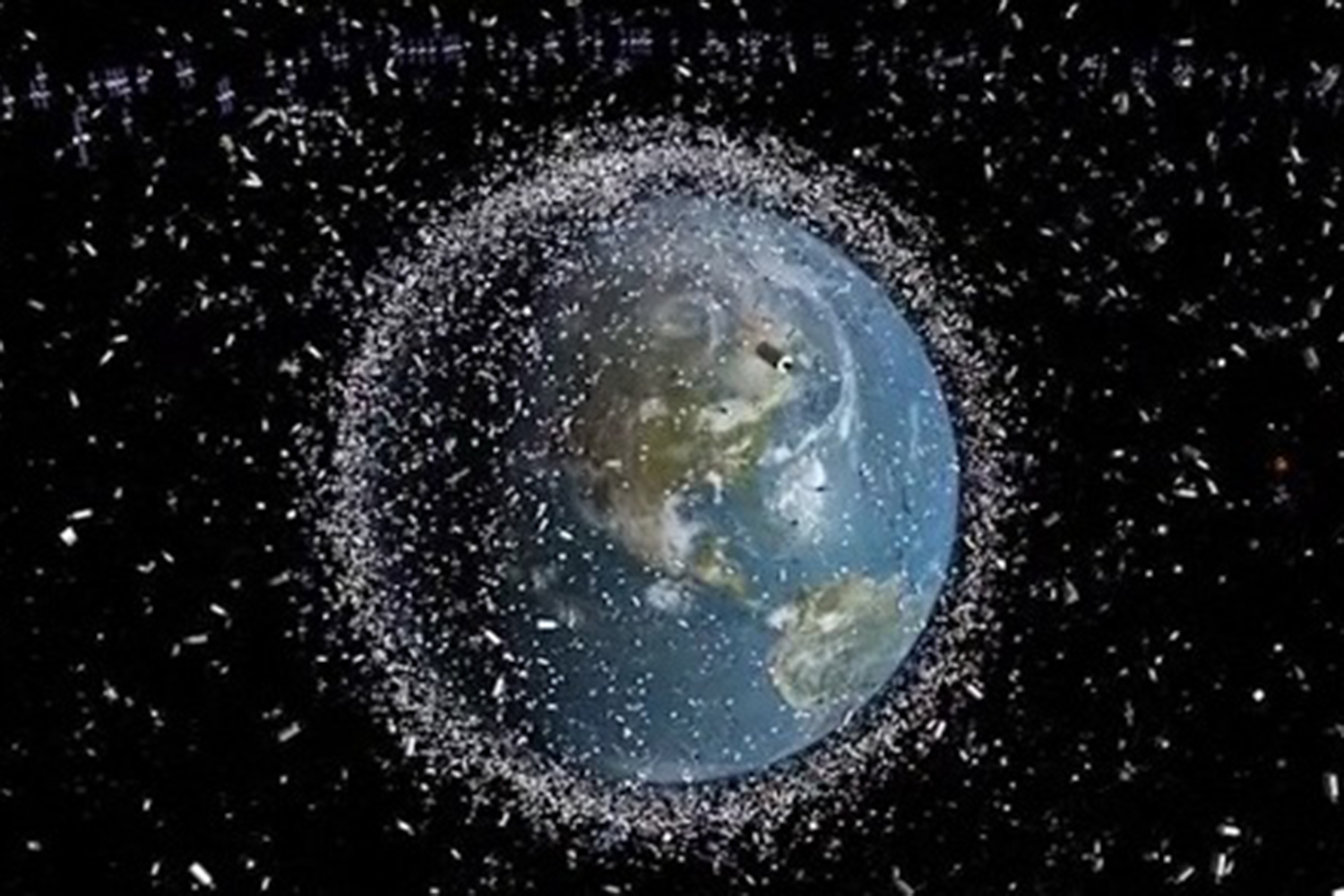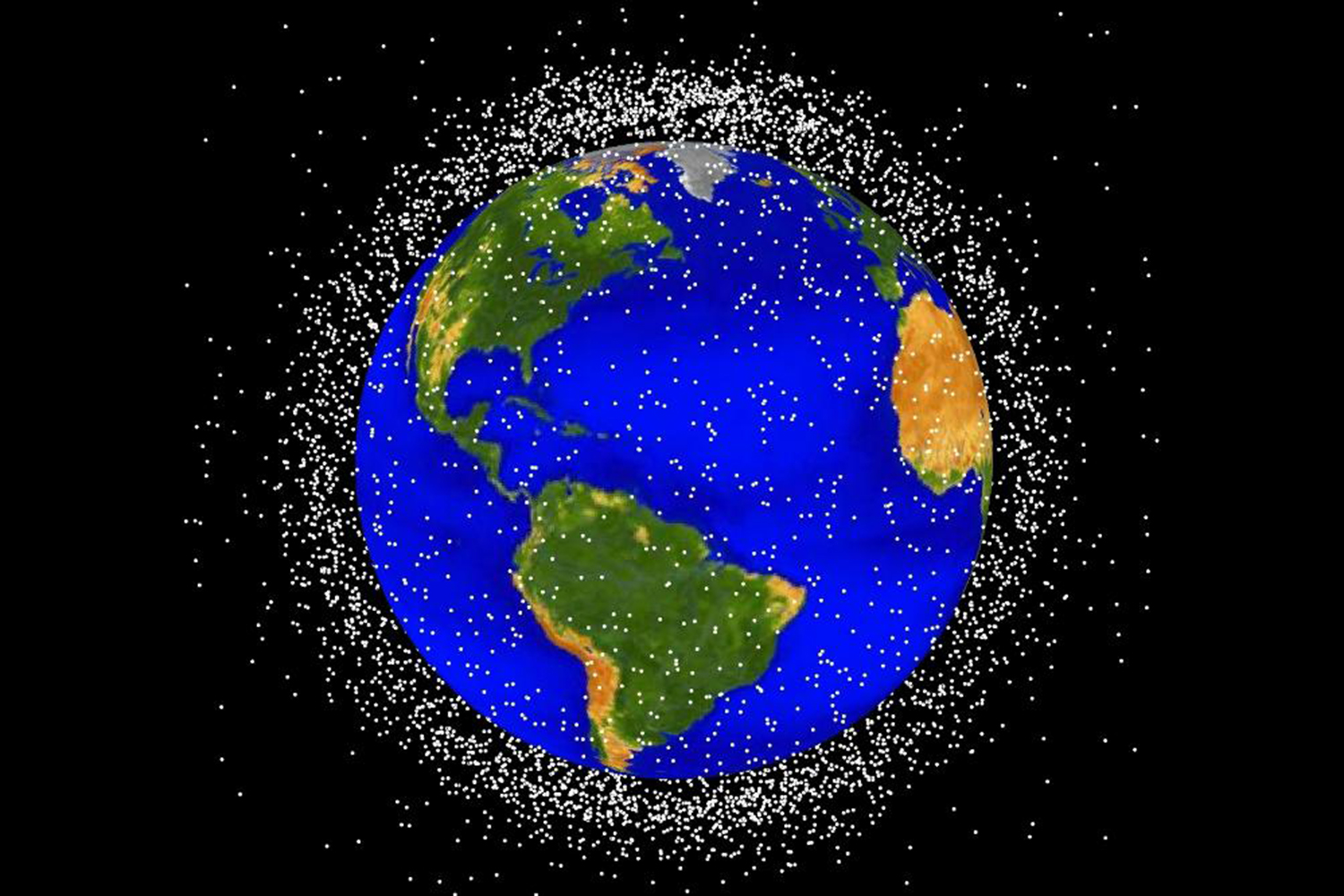There are some 5,000 objects larger than three feet, 20,000 objects over four inches, and 750,000 objects around 0.4 inches orbiting Earth. “For objects larger than one millimeter (0.04 inch), 150 million is our model estimate for that,” Holger Krag, who heads the European Space Agency’s space debris office, told conference attendees. “The growth in the number of fragments has deviated from the linear trend in the past and has entered into the more feared exponential trend.”
Krag and others are worried about what’s called the Kessler syndrome, which describes a cascade affect of collisions that create more and more debris until space travel is effectively impossible. Although we’re still safe from such a syndrome, satellites already have to make regular avoidance maneuvers to avoid smacking into trash.
The debris problem is difficult to envision from Earth. Space, after all, looks like a spacious void from down here. But in a dramatic video released last week, ESA puts the problem into perspective, depicting the space around Earth with cinematic drama and an ominous score.
Beginning 9.5 billion miles away, where space debris is scarce, the video quickly ushers us to the geostationary ring of Earth’s orbit, where the average distance between two objects is less than 120 miles. We’re soon within low earth orbit, where two-thirds of all large manmade space objects orbit, including around 600 active satellites and thousands of fragments, rocket stages, and defunct satellites. Orbiting within this region, the International Space Station sports scars on its surface from the occasional impact with debris.
Luckily, some agencies have set out to tackle the space problem: The ESA and the Japanese Aerospace Exploration Agency (JAXA). However, with a JAXA test mission failing earlier this year, space debris remains an unsolved problem humanity will have to face soon or risk remaining on Earth indefinitely.
Credit: ESA/ID&Sense/ONiRiXEL, CC BY-SA 3.0 IGO







